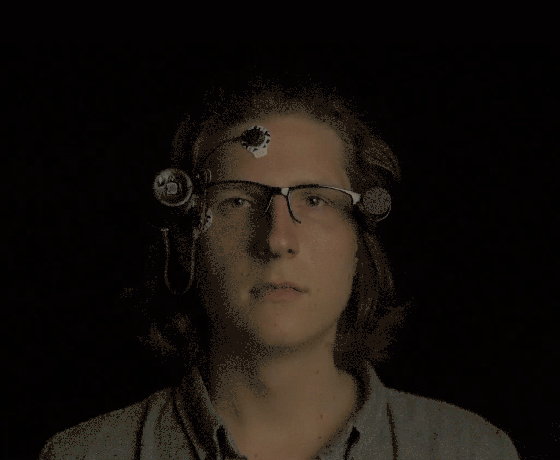A new issue of the venerable MagPi is out today. As you can see from the cover above, issue 70 is packed with useful news, tutorials, reviews and other stuff. The big feature this month is on home automation. Get hold of your copy today, either in print or digitally, by visiting the MagPi website.
Display multi-line text on an Inky pHAT with your Raspberry Pi
Spencer Organ got hold of an Inky pHAT three-colour e-ink display from Pimoroni (also available from The Pi Hut) and wrote a script which takes a random quote from a file of quotes and cuts it up into the appropriate length for display. The quotes list he uses is Bible verses, but you can replace that with secular motivational quotes if you’d prefer! You can read more about it here and the code is available on GitHub.
German students create a Raspberry Pi-powered camera device which records those moments you miss
Every minute, we lose an estimated six seconds of vision when we blink, according to research at the University of Tokyo. To combat this “problem”, students at the University of Bremen have developed a wearable camera that takes video footage when you blink. Called the Augenblick, the device has been mounted to a pair of glasses and features a Raspberry Pi Zero and Pi NoIR camera inside a tube. The Zero is connected up to some MyoWare Muscle Sensors that detect the electrical impulses which trigger the blink. You end up with stop-start footage of the bits you “missed” while wearing the device. An English-language summary of the device, including some recorded footage, is available here whilst a full German-language paper on the contraption can be found here.
A book that talks back to you in Arnie’s voice – controlled by a Raspberry Pi
Dan Aldred runs a Raspberry Pi club and asked the kids what they wanted to create. They replied that they wanted to make a book that talks to you, or rather demands that you read it. First of all, they got hold of a book to do it with: Arnold Schwarzenegger’s biography! The game was afoot!
They wired up a distance sensor to detect the proximity of a possible reader and a red LED in Arnie’s ‘eye’ on the cover to glow red if the person ignores the voice which emanates from a Bluetooth speaker. They used a tilt switch to detect movement of the book, which triggers more sounds and also cut a hole in many pages of the book to hide the Raspberry Pi and battery.
Not quite sure how cutting a load of pages out encourages you to read the book, but I guess you could do it so that it reads an electronic copy to you!
You can see the book in action below and read more over on Hackster.io:
Counting bees in a hive with a Raspberry Pi
Mat Kelcey set-up a bee hive and wondered if there was a way to count the number of bees in the hive. This, he reasoned, would give him a good indication of the health of the hive and some interesting information for studying behaviour. He set-up a Raspberry Pi, a Pi Camera, some power circuitry and put it all inside a plastic tub. Power is supplied from a LiPo with a solar panel for charging. There’s a whole bunch of stuff on his write-up about image processing, neural networks and TensorFlow that I admit to not really understanding, but if you dig deep, there’s a tremendous amount of detail. You can read his write-up here and see his code on GitHub.
Self-contained lighting effects using a Raspberry Pi Zero and Go
A programming language called ‘Go’ is pretty big news nowadays. Personally, it scares the heck out of me. Sooooo complicated, but what do I know? Some people like it. Tom Mitchell has taken Go and written a great script to communicate with the Pimoroni Scroll pHAT HD mounted on a Raspberry Pi Zero. He’s put a Pimoroni Button Shim in between the two boards to cycle through various modes, brightness and different parameters for the scenes. All-in-all, it creates a very attractive effect, shown above. Instructions on how to use the script can be found on GitHub.








